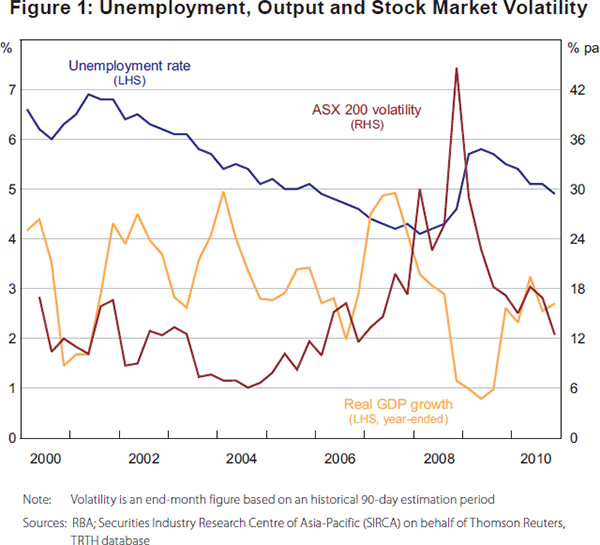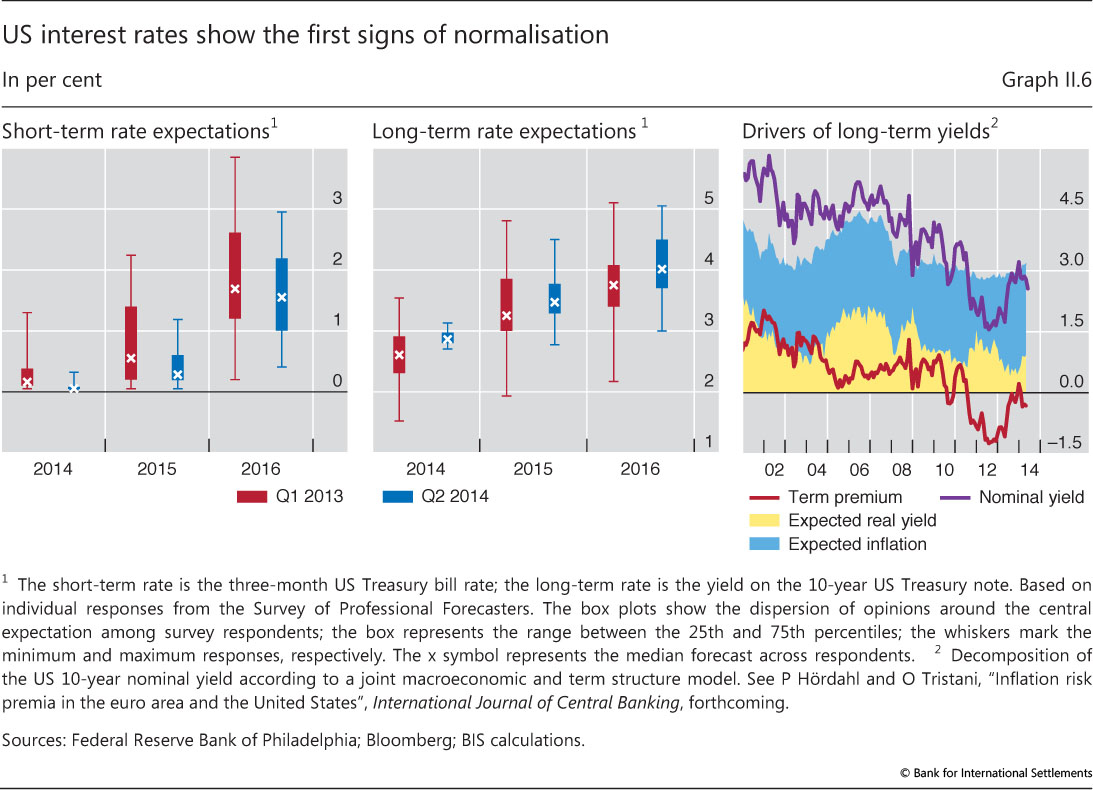Determinants of stock market volatility and risk premia
This service is more advanced with JavaScript available, learn more at http: We show the dynamics of diverse beliefs is the primary propagation mechanism of volatility in asset markets. Hence, we treat the characteristics of the market beliefs as a primary, primitive, explanation of market volatility. We study an economy with stock and riskless bond markets and formulate a financial equilibrium model with diverse and time varying beliefs.
Macroeconomic determinants of stock market volatility and volatility risk-premiums - WRAP: Warwick Research Archive Portal
Also, our model explains the presence of stochastic volatility in asset prices and returns. Two properties of beliefs drive market volatility: This research was supported by a grant of the Smith Richardson Foundation to the Stanford Institute for Economic Policy Research SIEPR.
We thank Kenneth Judd for constant advice which was crucial at several points in the development of this work. We also thank Kenneth Arrow, Min Fan, Michael Magill, Carsten Nielsen, Manuel Santos, Nicholas Yannelis, Ho-Mou Wu and Woody Brock for comments on earlier drafts. This revised version was published online in January with corrections to the Cover date.
Part of Springer Nature. Not logged in Not affiliated Determinants of stock market volatility and risk premia. Cite this article as: Annals of Finance 1: Asset prices under habit formation and catching up with the joneses.
American Economic Review Papers and Proceedings 80 , 38—42 Google Scholar. Risk premia and term premia in general equilibrium.

Journal of Monetary Economics 43 , 3—33 Google Scholar. Beauty contests and iterated expectations in asset markets. Risk premiums in the term structure: Journal of Monetary Economics 24 , — Google Scholar. Prospect theory and asset prices. Quarterly Journal of Economics CXVI , 1—53 Handbook of econometrics, Vol.
An intertemporal asset pricing model with stochastic consumption and investment opportunities. Journal of Financial Economics 7 , — Google Scholar.
Stock price volatility, learning, and the equity premium. UCLA, Anderson School A dynamic structural model for stock return volatility and trading volume. The Review of Economics and Statistics 78 , 94— Google Scholar.
Asset prices, consumption and the business cycle. Handbook of macroeconomics, Vol. By force of habit: Journal of Political Economy , — Google Scholar.
Explaining the poor performance of consumption-based asset pricing models. The Journal of Finance 55 , — Google Scholar. Stock prices, earnings, and expected dividends. Journal of Finance 43 , — Google Scholar.
Yield spreads and interest rate movements: Review of Economic Studies 58 , — Google Scholar. Overconfidence and excess entry: American Economic Review 89 , — Google Scholar. Mean reversion in equilibrium asset prices. American Economic Review 80 , — Google Scholar. The equity premium and the risk-free rate: Journal of Monetary Economics 31 , 21—45 Google Scholar. Journal of Political Economy 98 , — Google Scholar. The forward discount anomaly and the risk premium: Journal of Empirical Finance 3 , — Google Scholar.
First-order risk aversion and the equity premium puzzle. Journal of Monetary Economics 26 , — Google Scholar. Permanent and temporary components of stock prices.
Journal of Political Economy 96 , — a Google Scholar. Dividend yields and expected stock returns. Journal of Financial Economics 22 , 3—25 b Google Scholar. Evolving term structure with heterogenous beliefs. Manuscript, Department of Economics, Stanford University Quarterly Journal of Economics , — Google Scholar.
The determinants of the variability of stock market prices. American Economic Review Papers and Proceedings 71 , — Google Scholar. Evaluating the effects of incomplete markets on risk sharing and asset pricing. Stochastic consumption, risk aversion, and the temporal behavior of asset returns.
Journal of Political Economy 91 , — Google Scholar. Perturbation method for general dynamic stochastic models. PSD - A perturbation solver for dynamic systems. Stanford University, Department of Economics, http: Journal of Economic Literature 34 , 42—71 Google Scholar. On the structure and diversity of rational beliefs. Economic Theory 4 , — An edited version appears as Chapter 2 of Kurz, M.
Economic Theory 8 , — Studies in economic theory, No. Berlin Heidelberg New York: The equity premium is no puzzle. Endogenous fluctuations and the role of monetary policy. Knowledge, information, and expectations in modern macroeconomics, Ch. In honor of Edmund S.
Princeton University Press a. The role of expectations in economic fluctuations and the efficacy of monetary policy. Journal of Economics Dynamics and Control to appear Coordination and correlation in Markov rational belief equilibria. Economic Theory 8 , — Google Scholar.
Endogenous uncertainty and market volatility. Economic Theory 17 , — Google Scholar. Endogenous uncertainty in a general equilibrium model.
Risk aversion and the martingale property of stock prices. International Economic Review 14 , — Google Scholar. Asset prices in an exchange economy. Econometrica 46 , — Google Scholar. The equity premium and the concentration of aggregate shocks. Journal of Monetary Economics 15 , — Google Scholar. Social value of public information. American Economic Review 92 , — Google Scholar. Rational belief structures and rational belief equilibria. Floating exchange rates vs.
A monetary union under rational beliefs: Economic Theory 21 , — Google Scholar. Instability of return prediction models.

Predictability of stock returns: Journal of Finance 50 , — Google Scholar. Mean reversion in stock prices: Journal of Financial Economics 22 , 27—29 Google Scholar.
Existence of equilibrium of plans, prices and price expectations in a sequence of markets. Econometrica 40 , — Google Scholar. Journal of Monetary Economics 22 , — Google Scholar. Consumption, the persistence of shocks, and asset pricing puzzles.
Draft, Department of Economics, University of Maryland Does the stock market rationally reflect fundamental values? Journal of Finance 41 , — Google Scholar. Do stock prices move too much to be justified by subsequent changes in dividends. American Economic Review 71 , — Google Scholar.
Financial Analysis Journal 48 , 46—50 Google Scholar. Are we all less risky and more skillful than our fellow drivers?
Central clearing: trends and current issues
Acta Psychologica 47 , — Google Scholar. Excess volatility and predictability of stock prices in autoregressive dividend model with learning. Review of Economic Studies 63 , — Google Scholar. The equity premium puzzle and the riskfree rate puzzle. Imperfect common knowledge and the effect of monetary policy. Knowledge, information and expectations in modern macroeconomics, Ch.
Princeton University Press Speculative trading with rational belief and endogenous uncertainty. Asset price volatility and trading volume with rational beliefs.
Economic Theory 23 , — Google Scholar. Department of Economics Stanford University Stanford USA 2. Publisher Name Springer-Verlag Print ISSN Online ISSN About this journal Reprints and Permissions.
Source Sans Pro, Helvetica, Arial, sans-serif; font-size: Unlimited access to the full article Instant download Include local sales tax if applicable. Get Access to Annals of Finance. Learn about institutional subscriptions. RIS Papers Reference Manager RefWorks Zotero. BIB BibTeX JabRef Mendeley. Share article Email Facebook Twitter LinkedIn. Cookies We use cookies to improve your experience with our site. Over 10 million scientific documents at your fingertips Switch Edition Academic Edition Corporate Edition.